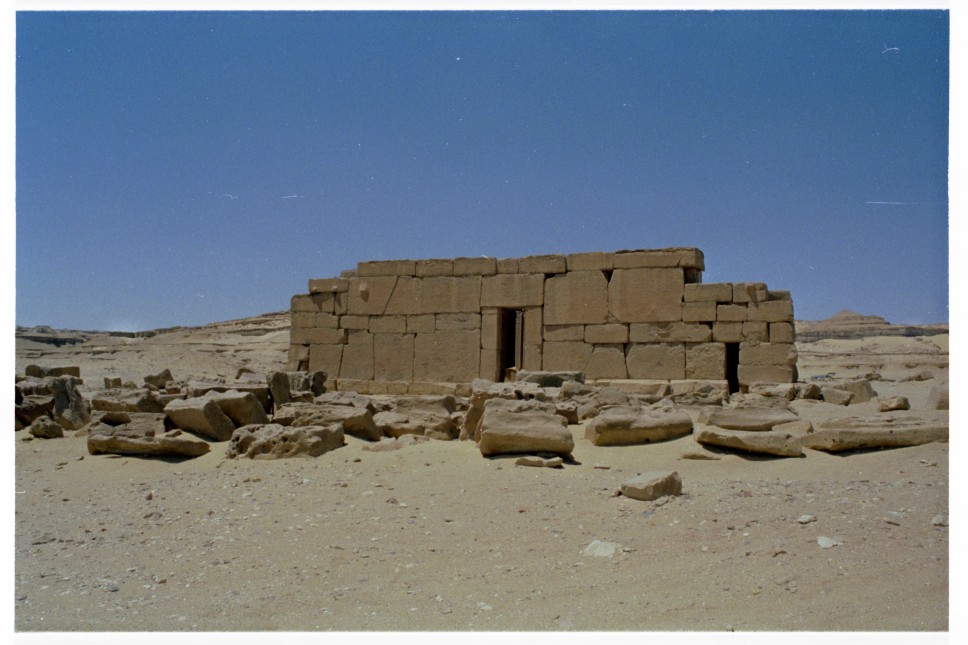
Full photo here.
It's kind of a funny little temple. Its construction has been variously described as Old or Middle Kingdom and most often thought to be dedicated to Sobek. The blocks making up the structure are of various sizes and shapes and fit together without mortar.
But that's not what this post is about. The temple sits at the base of a spectacular series of cliffs known as the Qasr el-Sagha escarpment. The northern rim of the depression is lined with escarpments of late Eocene (ca. 33.7-40 mya) and Oligocene (33.7 to 23.8 mya) age. The Qasr el-Sagha Formation is probably one of the most extensively studied of the Tertiary sequences in the Fayum, partly because of the escarpment (QeS is the formation's type site) and also because it is the equivalent of the Upper Mokattam (Ma’adi Formation) beds of the Gebel Mokattam near Cairo which also forms spectacular cliffs there.

Full photo here.
The formation itself is around 200m thick and is made up of a series of alternating crossbedded sand, sandstones, clays, marls, and limestones with abundant Ostrea, Carolia, and Turritella, along with numerous vertebrate species (Beadnell 1905:50-51). The environment throughout most of the sequence was a nearshore and estuarine or delta environment or as Bown and Kraus put it, a "retreat of shallow seas coupled with a concomitant advance of lagoonal and lowland coastal alluvial plain envronments" (Bown and Krauss 1988:48). The specific section here was probably a marine bar or estuary, perhaps lagoonal or the lee side of barrier islands. The temple member, shown above is one of the shallow (<20m) nearshore environments. A closeup of part of the formation:

Full photo here.
reveals the base of one stratum containing numerous burrow casts. Traversing up the various escarpments is geology at its finest, where one is able to note the changing environments and fossil contents with almost every step.
References:
Beadnell, H. J. L. (1905). The topography and geology of the Fayum Province of Egypt. Cairo., National Printing Department.
Bown, T. M. and M. J. Kraus (1988). Geology and paleoenvironment of the Oligocene Gebel Qatrani Formation and adjacent rocks, Fayum Depression, Egypt. Washington, United States Government Printing Office.